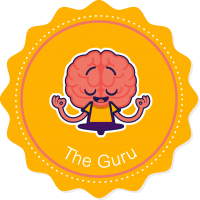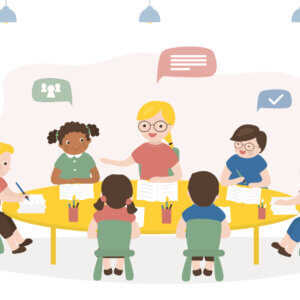
Embracing Mindfulness Practices into the Classroom
In today’s fast paced educational landscape, where the emphasis often revolves around academic achievement and performance metrics, teachers and students frequently experience high levels of stress and pressure, leading to burnout and diminished wellbeing.
With an attempt to simplify the process of learning, one question I used to pose to students and teachers at the start of the academic term during my tenure as the school leader was:
‘Together we are a group of young minds and bunch of adults in this building. The question is, “How can we best utilize our time together this term?”.’
Having a focused question can be supportive when we try to look at the big picture, develop the school curriculum or explore behavioural patterns in teachers and students. In order to answer this question, as educators, we need to ask ourselves one more question – ‘What really matters in schools?’
Being informed about the challenging demands of the real world, such questions can help us identify and explore the primary purpose of schools on a deeper level. With the vastness of the curriculum expectations and extremely busy school hours, we need to really think about letting go off things rather than adding more to the pile. We can’t do it all! So, we need to be clear about what really matters in schools.
If you ask this question to your present generation students and teachers, I am sure the answers you get would be:
Self-confidence
Compassion and love
Happiness
Resilience
Wellbeing…
Someone might say ‘hard-working’ or ‘successful’; however, the responses would be fewer. Schools from the mainstream domain around the world are now actively implementing programs that recognise the importance of nurturing a child’s social, emotional, mental, spiritual, and cognitive well-being (Garrison Institute Report, 2005; Tregenza, 2008; Yager, 2009). Not just the students, it is by integrating mindful practices into the learning environment, teachers and students can collectively cultivate a sense of wellbeing and overall mental and emotional health. The world is redefining the meaning of education – it is not merely a right anymore, it is a collective responsibility. In this article, we will explore the significance of learning mindfully and provide practical strategies to foster a supportive and nurturing educational landscape.
The Importance of Mindful Learning for Wellbeing
‘Educating the mind without educating the heart is no education at all.’
The core intention of learning mindfully is to encourage students and teachers to begin the shift towards a more balanced and heart-centred environment for learning. In a complex, changing world, we need virtues of resilience, self-awareness, and compassion not just in young learners but also in adult facilitators who respond to their needs. Learning mindfully is not just a routine, it is a practice to attain the heightened levels of wellbeing, characterized by reduced stress, enhanced focus, and improved emotional regulation.
Reduced Stress: Mindful learning encourages individuals to be present in the moment, letting go of worries about the past or future. This can significantly reduce stress levels for both teachers and students, leading to improved mental and emotional wellbeing.
Enhanced Focus and Attention: Mindfulness practices train the mind to direct attention and sustain focus, leading to increased productivity and quality of learning. By cultivating present-moment awareness, teachers and students can effectively concentrate on their tasks, fostering deeper engagement with the learning process.
Improved Emotional Regulation: Mindful learning equips individuals with tools to better regulate their emotions. This can be particularly beneficial in managing stress, dealing with challenging situations, and fostering positive relationships in the learning environment.
Practical Strategies for Mindful Learning
Integrating mindful practices into the learning process can notably enhance wellbeing for both teachers and students. Here are some practical strategies to incorporate mindfulness into the educational setting. Please feel free to try some of these into your classrooms and share with us any impact that you experience.
- Mindful Breathing: Start each class or study session with a short mindful breathing exercise. Encourage teachers and students to take a moment to focus on their breath, bringing their attention to the present moment.
- Mindful Movement: Integrate brief mindful movement breaks into the daily routine. This could include stretching, yoga, or simple movements that help restore focus and release tension.
- Gratitude Practice: Encourage teachers and students to express gratitude for something in their lives regularly. This practice promotes a positive mindset and cultivates appreciation for the present moment.
- Mindful Listening: Incorporate activities that focus on active listening skills, such as mindful listening exercises, discussion circles where each person has an opportunity to speak and be heard or using mindfulness bells to bring attention back to the present moment.
- Create a Calming Space: Designate a corner in the classroom or study area as a calming space. Fill it with cushions, soft lighting, and perhaps calming music or nature sounds. Encourage students and teachers to use this space for moments of solitude and relaxation.
- Encourage Self-Care: Teach students and teachers about the importance of self-care and prioritise it in the learning environment. Promote healthy habits such as regular breaks, physical activity, and engaging in activities they enjoy outside of school or work.
- Mindfulness Culture: Create a culture of mindfulness in school. Teachers and students should be aware of their feelings, thoughts and emotions and must have regular collaborative conversations to share their inner self. This would lead to a more transparent environment where each individual’s wellbeing will be taken care of.
Embracing mindful learning is a lifelong practice that requires regular commitment and reinforcement. By prioritising the wellbeing of both teachers and students and incorporating mindful practices into the learning environment, educators can create a nurturing space that supports personal growth, resilience, and a sense of accomplishment.
Dr Akash Raut
Head, Academic Advisor – South Asia





The article is need of the hour.
Thank you Dr.Akash for such an article.
Wow, what an article really it is most important tool and can be utilized in our activities, projects and also in our classrooms. It will bring a lot of stability in our teaching methods and practiced.
Thankyou so much Dr.Akash it is really a very important article.
Both students and teachers spend majority of their waking time in schools, its very important to make this environment as stressfree as possible for the mental and physical well being of students and teachers. This will also enhance the ability of students and teachers to pay attention, increases concentration, and regulate and control their emotions.
Mindful learning has globally set the new ways of growth and development in teaching and learning process.
it provides a vent to express themselves in a more rational way, understand themselves and channelize their energies in a more positive direction, which lowers their day today stress, which they come across and help them to control their emotions.
We really need to connect the body soul and heart to educate the whole system
This article is beautiful and gives me few ideas to inculcate in my classroom.
Thank you
Prioritizing mindful learning not only enhances academic outcomes but also promotes emotional resilience, stress reduction, and overall wellbeing for both teachers and students. It fosters a supportive learning environment where everyone can thrive.
Thankyou so much Dr.Akash
it is really a very important article.
Good content
Everyone must read this Article
Thank you Dr Akash for this write up. surely , prioritizing learning that is mindful actually help the teaching-learning communities to advance with the pace of the rapidly changing world for better outcome.
Prioritizing mindful learning cultivates a harmonious balance between academic growth and emotional well-being for both teachers and students. By promoting present-moment awareness and self-care practices, it empowers individuals to navigate challenges with resilience, fostering a nurturing environment conducive to holistic development and flourishing
practising mindful learning methods are really needed
Incorporating mindfulness practices into the classroom can significantly benefit students’ mental well-being and academic performance.
Wonder article, a treat for all the teachers who undoubtedly have the passion for teaching and to bring about a change.. Kudos!
A treat for all the teachers who undoubtedly have the passion for teaching and to bring about a change.. Kudos!
Mindful learning is most effective when embraced by both Administrators and Educators. Teachers implement practices in the classroom, while Administrators create a supportive environment. This holistic approach nurtures everyone’s wellbeing. Financial security for all staff is essential for effective Mindful learning.